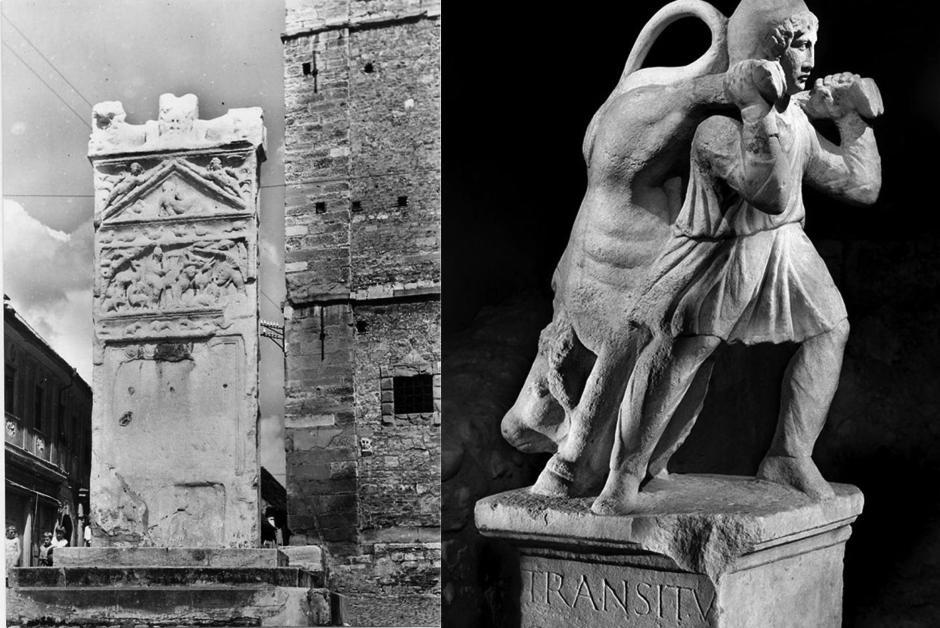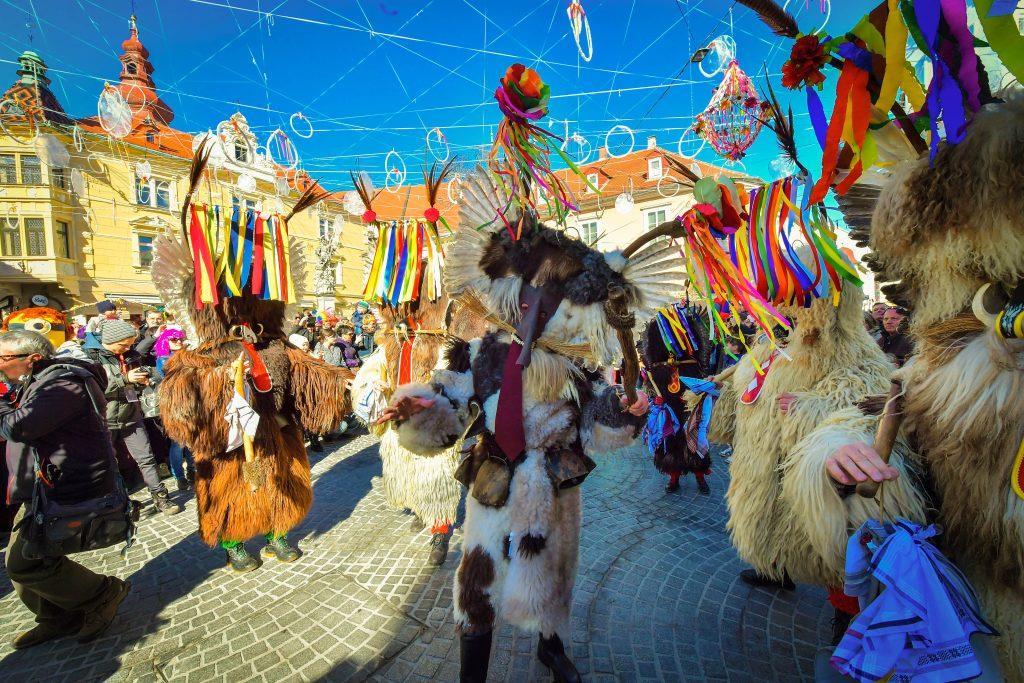MAGNIFICENT ROMAN POETOVIO
Roman Antiquity
People first settled at the lively crossroads of merchant roads, where it was safe to cross the Drava River, already at the end of the 3rd millennium BC. The area was settled by the Celts in late Iron Age, but the city really started flourishing with the arrival of Romans. Archaeologists believe that some 30 thousand people lived in the greater area around Poetovio, which was one of the most important Roman army base camps, at the time.
In the middle of the 5th century the territory was plundered by the Huns, and later gradually occupied by the Slavs. At the end of the 8th century Ptuj became part of the Frankish Empire, and at the end of the 9th century the city came under the power of the Salzburg Archbishopric.

THRIVING MARKET TOWN
Middle Ages
The city saw a revival of its trade similar to the Roman era only in the 11th century, when lords of Ptuj took over the rule. “They were not only successful in the battlefield, but also proved themselves as erudite and critical supporters of art. They reinforced the town militarily, built a new castle on the remnants of the old, and long-distance trade was revived.” (Marija Hernja Masten, Staro mesto ob Dravi)
The city’s most prominent buildings were erected already in the first half of the 13th century – the fort on the castle hill, the Dominican monastery, the Minorite monastery, and the Church of St. George. Ptuj officially got its city rights in the middle of the 13th century, including the right to build a city wall, which enclosed all city buildings, both monasteries, and the castle.

FIRES RAVAGE THE CITY AFTER THE TURKS
Early Modern Period
An economic recession started at the end of the 16th century, while the city of Ptuj was at the forefront of defense against Turks due to its strategic position. When the city finally managed to defeat the Turks, it was destroyed by terrible fires and other disasters that gradually wore away the splendor of its most magnificent years. “Nevertheless the Dominican and Minorite friars managed to thoroughly and grandly add baroque features to their monasteries in the 17th and 18th centuries, while Count Walter Leslie and his successors turned the ascetic fort into a luxurious residence.” (Marija Hernja Masten, Staro mesto ob Dravi)

DELICIOUS WINE AND BATHS IN DRAVA ATTRACT THE FIRST TOURISTS
19th century
The first initiatives to develop tourism in the city appeared back in the second half of the 19th century. “Citizens of Ptuj invited travelers to come and see the remnants of the city’s glorious past, they praised its mild climate and good wines, and recommended bathing the rapid and clean Drava.” (Marija Hernja Masten, Staro mesto ob Dravi)

ELEGANT SOCIAL HUB
20th century
From the beginning of the 20th century until World War II, the city was famous for the bubbling social life that took place in its bars and cafés. The excellent choice of coffee, wine, and spirits attracted wealthy and more demanding guests to the city’s hotels and cafés. Hotel Osterberger, now Hotel Mitra, was the most prestigious hotel in Ptuj. Cafés and hotels also hosted concerts and balls, which were an important symbol of the city’s soul and air of refinement.

A LIVELY CENTER OF CULTURE AND LIVING TRADITION
Ptuj today
Today Ptuj is much more than just a city with a rich history and glorious past. It is a lively European center of culture, a city of festivals with a remarkable ethnographic tradition that is deeply rooted in its residents’ lives.





